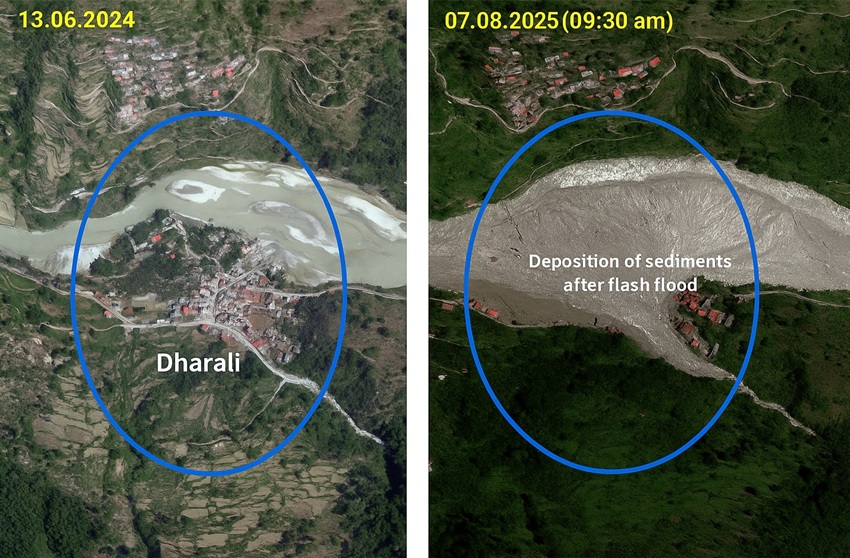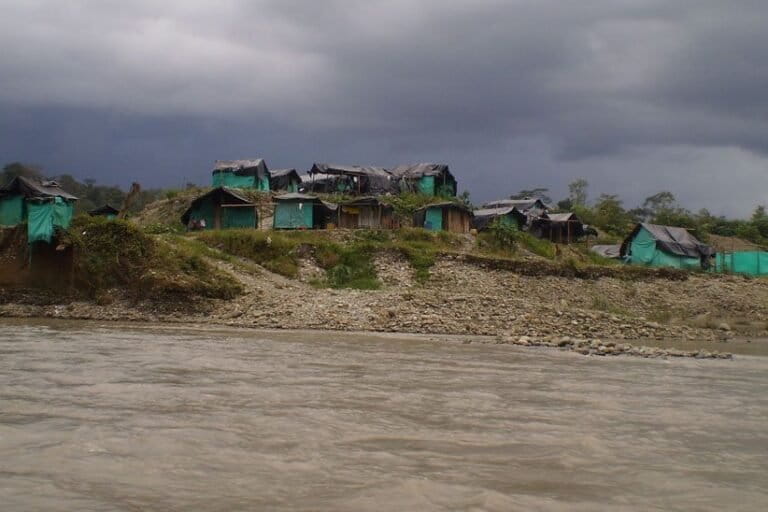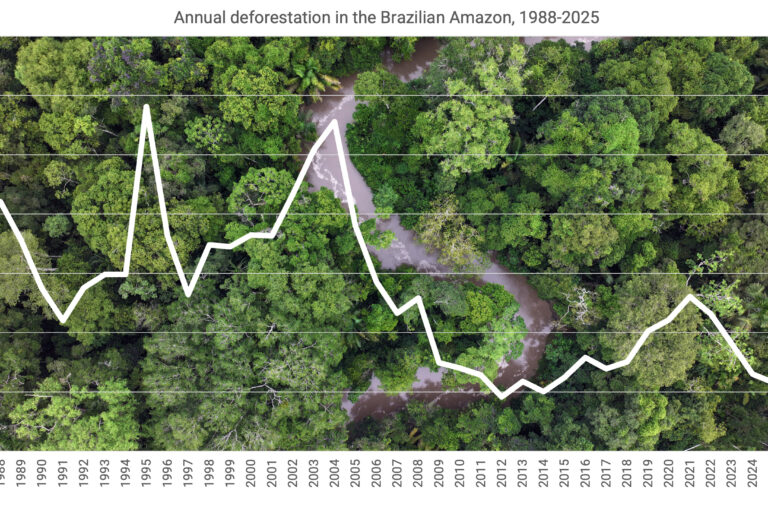On Aug. 5, a flash flood devastated much of the Himalayan village of Dharali in India’s Uttarakhand state. As of Aug. 17, six people were confirmed dead, while 60-70 people remained missing. The primary cause of the flash flood is still unconfirmed, but experts say that increased construction in the sensitive Himalayan region, despite a history of past floods, worsened the impacts, reports contributor Kavita Upadhyay for Mongabay India.
Dharali’s market area, which was covered by 12-18 meters (40-60 feet) of sediment and boulders after the flash flood, has experienced a construction boom in recent decades. Houses, lodges, shops and hotels have sprouted up to accommodate increased tourists as well as pilgrims heading to the nearby, much-revered, Gangotri shrine.
“Traditionally, houses in this region were built on stable slopes, away from rivers,” Piyoosh Rautela, a geologist and former executive director at the Uttarakhand State Disaster Management Authority, told Mongabay India. “It was well understood that streams in the Himalaya are not always gentle. They are powerful and have carved out valleys over millennia.”
Recent settlements, however, have largely come up in unstable areas along roads and rivers. That’s despite a long history of rivers flooding the area. In June 2013, flooding from the Kheer Gad, the same stream responsible for this year’s disaster, also buried the Dharali market area.
After the 2013 flood, the government carried out flood protection work, including building reinforced concrete walls along the banks of the stream, which gave residents a sense of security over future floods, said 36-year-old Dharali resident Bhimraj Panwar, whose ancestral house was damaged in the Aug. 5 disaster.

Images released Aug. 7 by the Indian Space Research Organization revealed that Dharali’s market had grown on what scientists call a debris-flow fan, formed over the years by sediment deposited by the Kheer Gad.
“Establishing a settlement on land where the river continually deposits sediments is precarious, as it carries the risk of a Dharali-like disaster,” Wolfgang Schwanghart, who studies natural hazards and disasters in the Himalayas, told Mongabay India.
Manish Kumar, an ecohydrologist who has also worked on Himalayan hydrology, added that construction on these fans “is like choking the stream’s safety valves. The stream is bound to break out and reclaim its area sooner or later, which is what happened in Dharali.”
Following the Aug. 5 disaster, Uttarakhand’s chief minister instructed officials to ensure that no new construction takes place near water bodies, including rivers and streams. However, similar orders in the past haven’t been effective at stopping construction on sensitive sites, Upadhyay reports.
Read the full story by Kavita Upadhyay here.
Banner image: Satellite images comparing Dharali in June 2024 and on Aug. 7, 2025, after the flash flood. Image courtesy of National Remote Sensing Centre, Hyderabad.














